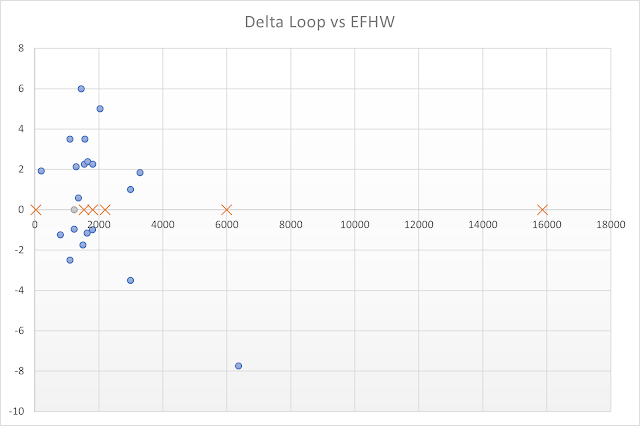There is always a need for another antenna. If this does not sound like a self evident truth you are probably reading the wrong blog.
For a while I had been contemplating building a new 6m beam. I have the DK7ZB multiband beam for 2-4-6 meters. When I made it, I thought it would be a nice addition covering these three bands. In practice however I found I don't really use the 2m and 4m bands and therefore have an overly complex antenna with 7 elements while only using it as a 2 element 6m beam. To make it transportable I have to remove (parts of) the 4m and 6m elements. With the 2m elements the antenna is rather bulky to transport.
I was looking for an antenna for 6m with more gain but less complexity in assembly and one that would be easy to transport. One of the things I wanted to avoid was having to use bolts and (wing)nuts to attach the elements - as these small parts have a tendency to go lost when you drop them while out in the field.
My ideal "high gain but still transportable" option came down to a 4 element antenna with a boom of 4m. Split in two the boom is transportable. The same goes for the elements. Now all I needed was a way to attach the elements without using any loose parts.
I remembered an old 11m vertical that had radials you could screw into the base. What if I could make some construction to be able to screw the elements in position?
Keeping the antenna light (it is for portable operation) I chose 8mm diameter tubes for the elements. The inner diameter of this tube fits 6mm metric threaded rod. Glueing these in I had my threaded elements.
Now for the other side I looked at a threaded rod extension (coupler). There is a round version and with the 6mm threads it snugly fits in a 12mm diameter aluminum tube.
 |  a a |
With this concept working I continued developing the antenna by spacing the elements along the boom (using plastic element holders to attach the elements to the top of the boom) and making them to size.
For the dipole I used a plastic pipe to create a mechanical non conducting connection. I inserted the same threaded rod extensions I used for the other elements. In this case I soldered a piece of wire to the extensions - creating a connection point for the coax.
| . .. | . .. |
I then created the quarter wave impedance transformer as specified by DK7ZB and put all the pieces in a small junction box. Note that I cut out an opening in the bottom of the junction box to be able to use an element holder for the dipole. That way I know all the elements are nicely in parallel.
In the end there is one spot left where this antenna has bolts and wing nuts: at the point the two boom parts meet. Perhaps I can design some other solution there in the next version.
Time will tell if the threaded connection is an improvement or that it will drive me crazy when dirt gets on the threads (quite imaginable in the field). For now I like the compact package the antenna constitutes while disassembled and I like the way I can quickly put it together.
After completing construction work I took the antenna out for a test. The results were peculiar to say the least. The VNA showed readings that were off and over the air tests did not correspond to the theoretical performance of the antenna.
Reacting to my first post about these results, Enno PF5X pointed out that not all glues are created equally. I used metal glue but did not take notice of the conductivity. Testing it afterwards I found issues with the conductivity on several elements.
 |
| Added metal screws to ensure a good conductivity |
So I made a necessary change to the design: connecting the aluminium tubes and the inserts (the threaded rod and threaded rod extension) with metal screws.
You could argue that the whole gluing step can be skipped in this final design but I think it makes for a more robust construction - which is important for an antenna used portably.
With this new antenna I went out last Saturday as the IARU 50Mhz contest was on. I also took my 2 element beam (actually a triband beam with 2 elements on 6m) for comparison.
PE5TT was available (again) for a simple test. At 25km distance with a comparable antenna we had the same signals both ways but s9+ this time (with design v1 it was only s7). Decreasing the power to 10w we could establish that the new beam has 2 s-points gain over the 2 element beam. We also found the F/B was at least 4 s-points. F/S was even more dramatic.
I subsequently entered the contest. There was some Es but most of it was too far south with weak skip to G. However I was able to check the beam's characteristics switching between the two antenna's. Confirming the 2 s-points difference. And even though signals vary strongly during Es conditions the practical F/B performance was apparent as even the strongest stations from S-Europe almost disappeared once I turned the beam to G.
.































